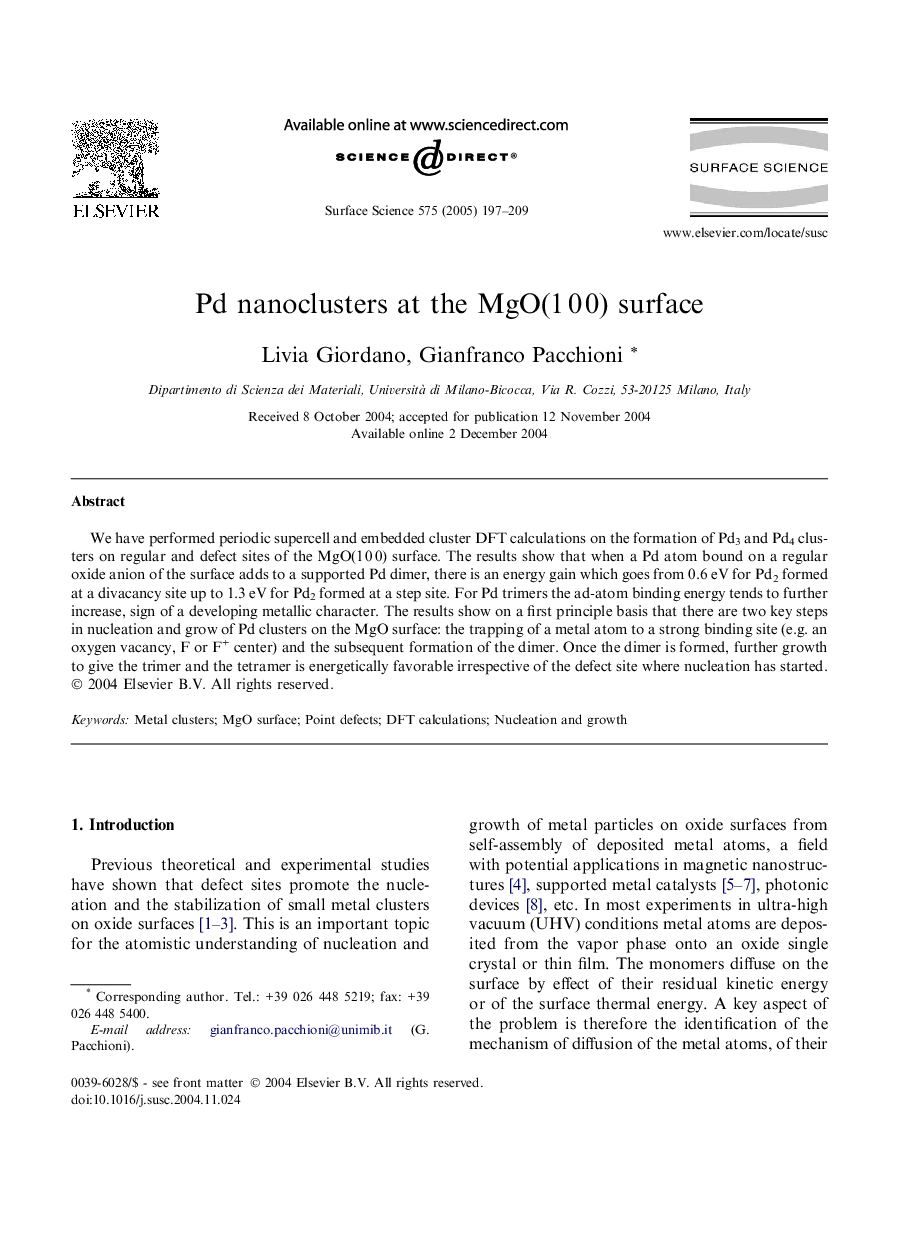| Article ID | Journal | Published Year | Pages | File Type |
|---|---|---|---|---|
| 9595790 | Surface Science | 2005 | 13 Pages |
Abstract
We have performed periodic supercell and embedded cluster DFT calculations on the formation of Pd3 and Pd4 clusters on regular and defect sites of the MgO(1Â 0Â 0) surface. The results show that when a Pd atom bound on a regular oxide anion of the surface adds to a supported Pd dimer, there is an energy gain which goes from 0.6Â eV for Pd2 formed at a divacancy site up to 1.3Â eV for Pd2 formed at a step site. For Pd trimers the ad-atom binding energy tends to further increase, sign of a developing metallic character. The results show on a first principle basis that there are two key steps in nucleation and grow of Pd clusters on the MgO surface: the trapping of a metal atom to a strong binding site (e.g. an oxygen vacancy, F or F+ center) and the subsequent formation of the dimer. Once the dimer is formed, further growth to give the trimer and the tetramer is energetically favorable irrespective of the defect site where nucleation has started.
Related Topics
Physical Sciences and Engineering
Chemistry
Physical and Theoretical Chemistry
Authors
Livia Giordano, Gianfranco Pacchioni,
